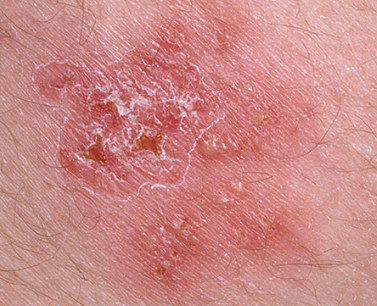Skin Herpes Infections: What They Really Are
Skin Herpes: it’s a classic case of a sudden onset of itchiness, that later turn into rashes and blisters.
It’s a fairly common occurrence, and although you’d like to think that it really is nothing, you can’t help but worry that you may have caught something bad and extreme, making you afraid to go out and about to do your daily routine.
Thankfully, that isn't really the case, because although herpes of the skin can be contagious, you may be able to live with it through proper care and management of the infection.
As always, the first thing that you need to do is to go see a doctor and get tested, especially when you see these signs and symptoms. It is the only way to get some answers and clear out confusion.
The Facts and Figures
What it is. Skin herpes is a collective term for the types of herpes infection that affects the skin. If you have herpes of the skin, you might have any one of the following: oral herpes, genital herpes, chicken pox, or Herpes Zoster.
What causes it? Because it is just a collective term for various herpes infections, there are also a group of viruses that can cause it, including Herpes Simplex Virus Type 1 (HSV 1), Herpes Simplex Virus Type 2 (HSV 2), and Varicella Zoster Virus (VZV).
There is no way of completely getting rid of it. Viruses that are able to remain dormant in the human body after causing initial infection cause herpes of the skin. As such, there is currently no known way of completely eradicating said viruses from the human body. There are however, ways in which you can mellow down the severity and duration of an outbreak.

When is the infection likely to occur? Herpes infections caused by HSV 1 and HSV 2 are not very predictable in their occurrences. Chicken pox is more likely to occur during childhood, while Shingles (the recurrence of a chicken pox infection), is more likely to occur in people 60 years and over.
Herpes of the skin is a contagious infection. Even though you are not showing any symptoms of the infection like blisters and sores, you may be able to still transmit the virus. It is also imperative that you do not let anyone touch the blisters or sores in fear of passing on the infection. Remember that the times in which the blisters and sores are present coincide with the time that the infection is highly contagious.
Some outbreaks can occur more than once. Infections caused by HSV 1 and HSV 2 are a type of skin herpes that can occur more than once in the span of a year. Chicken pox and Shingles on the other hand are skin herpes types that very seldom occur more than once in a person’s lifetime.
Triggers for outbreaks are not the same for every type. Various herpes of the skin types also have varying triggers that may cause their respective outbreaks. However, some of the common triggers for outbreaks include: immune deficiency, stress, and fever.
What You Can Do About Skin Herpes
Skin herpes is one of those infections that can surely cause irritation when you have it; however there is really no reason to fret if you do get the infection.
There are a lot of people who live with the infection happily every day, and there is no reason for you to not be able to do the same.
Here are a few pointers on how to live with the infection:
- Stay healthy. This pointer cannot be reiterated enough, but staying healthy will not only be able to keep you from contracting the herpes virus, but also keep other infections and diseases at bay.
- Stay clean. One of the principal ways in which the herpes virus can infect you is if you don’t practice proper hygiene. This is probably one of the most important pointers that is disregarded daily, but practicing proper hygiene will also be able to help you in minimizing the chances of getting the infection or having a re-infection.
- Support groups. Although some skin herpes types are only able to infect you once in your life, other types like oral and genital herpes have tendencies to recur. Support groups will be able to help you deal with the infection in a positive manner, so it is always helpful to try it out.
- Try not to stress yourself out. Several studies have supported that the more stressed a person gets, the higher the likelihood of them catching something. The same is true for herpes of the skin, so try and keep your stress levels to a minimum.
- Identify your triggers and work on them. Herpes of the skin infections are only ever able to reactivate when you trigger it with bad diet, poor hygiene, stress, and even lack of sleep. Identify what practices cause your herpes infection to reactivate and work on controlling them.
If you've been tested for Herpes, learn more about how to live with it. I have written a course, The Herpes Survival Guide, on Herpes that covers many things about living with the virus such as:
- Dating with Herpes
- Telling your partner/family
- How to find a support group
Skin herpes is surely irritating, but there is no reason for you to pull your hairs out because of it. In fact, you can very well live with the infection and still be able to enjoy the things you are fond of.
Remember that even though skin herpes infections may recur, there are ways in which you can control the severity and duration of the infection.
Keep a positive outlook on the infection and you’ll notice that it’s not so bad after all.



